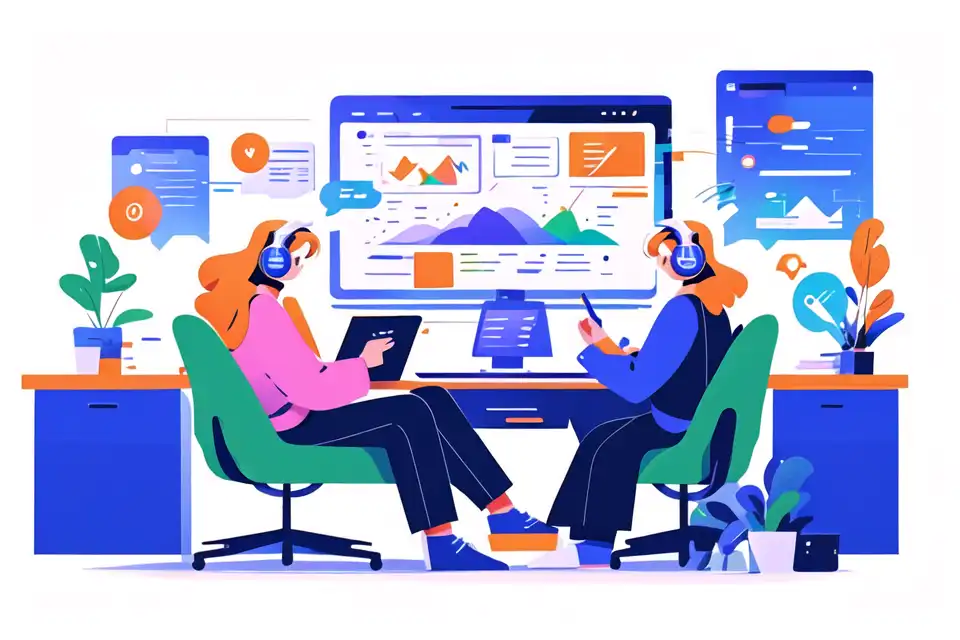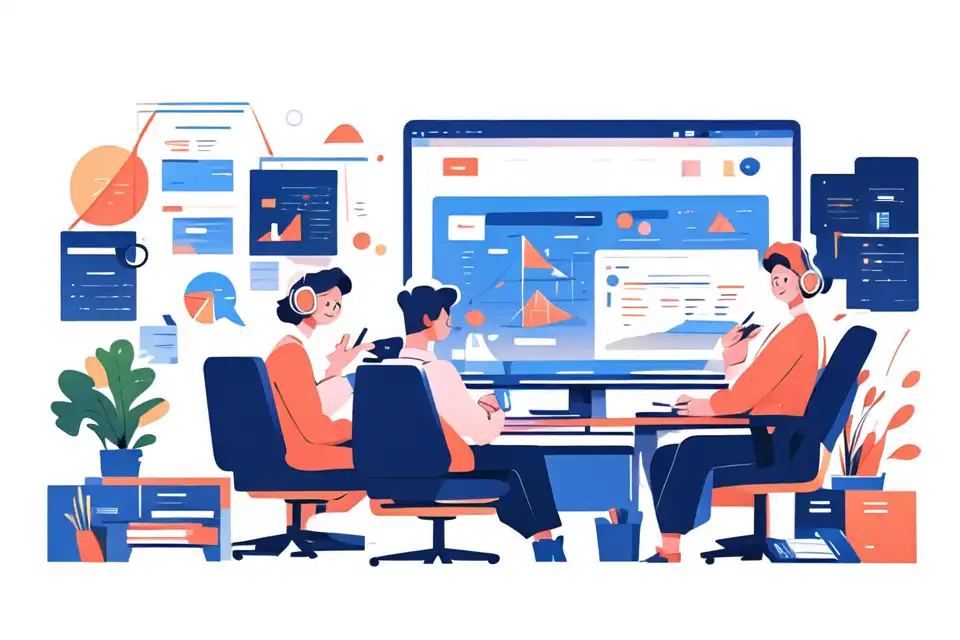Digital Learning Platforms
Learn about the top tips and strategies in digital learning platforms
Try Lark for Free
In a world where technology has permeated every aspect of life, education is not an exception. The advent of digital learning platforms has ushered in a new era in education, transforming the way teaching and learning are delivered. These platforms, which incorporate a blend of technology, pedagogy, and instructional design, offer an immersive and interactive educational experience that transcends the confines of a physical classroom.
The significance of digital learning platforms in today's educational landscape cannot be overstated. They bridge the gap between teachers and students, making education more accessible, engaging, and effective. By leveraging these platforms, educational institutions can create a learner-centric environment that personalizes education, encourages collaboration, and nurtures critical thinking skills.
Unlock the power of Lark to elevate your business operations. Discover actionable strategies and best practices in our comprehensive guide.
A deep dive into digital learning platforms
Overview of Digital Learning Platforms
Digital learning platforms are technology-based tools that facilitate the delivery of educational content. They include Learning Management Systems (LMS), Massive Open Online Courses (MOOCs), and other interactive learning tools. These platforms often incorporate multimedia content, interactive assessments, learner analytics, and collaborative tools to create a comprehensive learning environment.
Importance of Digital Learning Platforms in Modern Learning Environments
Digital learning platforms are reshaping education by transforming the one-size-fits-all approach of traditional classrooms into a dynamic, personalized learning environment. They facilitate self-paced learning, foster student engagement, and enhance the accessibility of education. Moreover, these platforms provide data-driven insights, enabling educators to monitor student progress and customize their approach accordingly.
Current Trends and Statistics on Digital Learning Platforms
The use of digital learning platforms is on the rise. According to eLearning Industry, the eLearning market is expected to reach $325 billion by 2025. Moreover, a survey by Docebo reports that 68% of workers prefer learning at their own pace, underscoring the growing demand for personalized, flexible learning solutions.
The multifaceted benefits of digital learning platforms
Enhancing Teaching and Learning Experiences
Digital learning platforms enhance the teaching and learning experience by making it interactive and engaging. For instance, Lark, a leading digital learning platform, provides a unified platform for communication, collaboration, and content creation, enabling educators to design immersive learning experiences.
Impact on Student Engagement and Learning Outcomes
Research shows that digital learning platforms can significantly boost student engagement and learning outcomes. A study by Stanford University revealed that students who used a digital learning platform demonstrated a 75% increase in engagement and a 16% improvement in learning outcomes compared to their peers who followed traditional learning methods.
Learn more about Lark can help you with everything mentioned so far in the article.
The practicalities of implementing digital learning platforms
Steps to Integrate Digital Learning Platforms into the Classroom or Curriculum
Implementing a digital learning platform involves several steps, including identifying educational objectives, selecting a suitable platform, training educators, and integrating it into the curriculum. Lark, for instance, offers comprehensive resources and support to facilitate a smooth transition to digital learning.
Tools and Resources Needed for Digital Learning Platforms
Effective use of digital learning platforms requires various tools and resources, from hardware devices like computers and tablets to software applications for content creation, communication, and collaboration. Lark, for instance, integrates seamlessly with various tools, making it a versatile platform for digital learning.
Real-life success stories of digital learning platforms
Case Study 1: XYZ University
XYZ University successfully integrated a digital learning platform into their curriculum, resulting in improved student engagement and learning outcomes. The platform facilitated personalized learning, enabled collaborative learning, and provided real-time feedback, enhancing the overall learning experience.
Case Study 2: ABC School
ABC School transitioned to digital learning by integrating a learning platform into their curriculum. The move led to a significant increase in student engagement and a reduction in dropout rates, demonstrating the transformative potential of digital learning platforms.
Related:
Education Solution | LarkLearn more about Lark can help you with everything mentioned so far in the article.
Overcoming challenges in adopting digital learning platforms
Adopting digital learning platforms can pose several challenges, including resistance to change, lack of technical skills, and concerns about data privacy. However, with proper planning, training, and support, these challenges can be overcome. Lark, for instance, offers robust security features and comprehensive training resources, making the transition to digital learning smooth and secure.
Future prospects of digital learning platforms in education
The future of digital learning platforms looks promising, with trends like artificial intelligence, gamification, and adaptive learning set to revolutionize education. As these platforms evolve, they will continue to enhance accessibility, personalization, and engagement in education, making learning more effective and enjoyable.
Learn more about Lark can help you with everything mentioned so far in the article.
Do's and dont's when implementing digital learning platforms
| Do's | Dont's |
|---|---|
| Do thorough research before choosing a platform | Don't rush the implementation process |
| Do invest in training for educators | Don't neglect the importance of data security |
| Do ensure the platform is user-friendly | Don't ignore feedback from users |
Related:
Education Solution | LarkLearn more about Lark can help you with everything mentioned so far in the article.
Conclusion
Digital learning platforms are revolutionizing education, making it more accessible, personalized, and effective. As these platforms continue to evolve, they promise to further enhance the teaching and learning experience, shaping the future of education. It's time for educational institutions to embrace this revolution for a brighter, more inclusive, and more productive educational landscape.
Unlock the power of Lark to elevate your business operations. Discover actionable strategies and best practices in our comprehensive guide.








